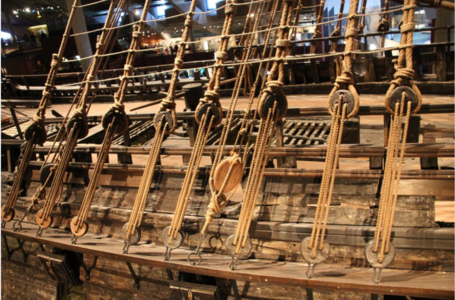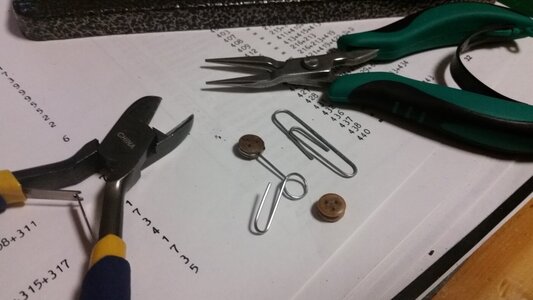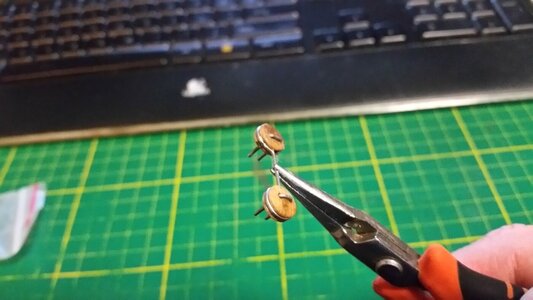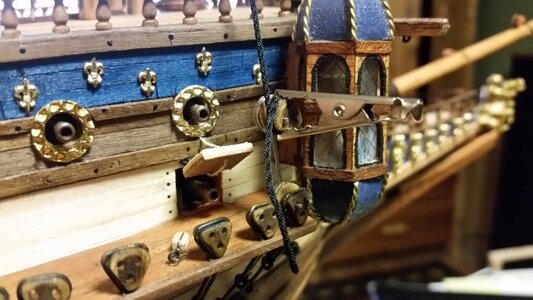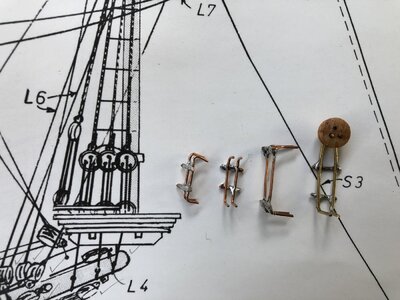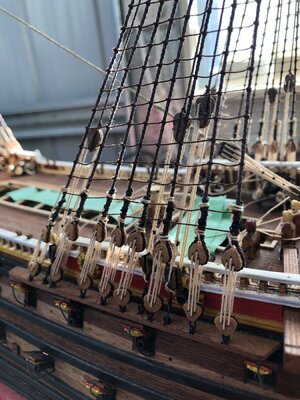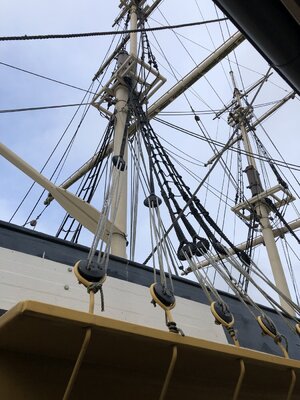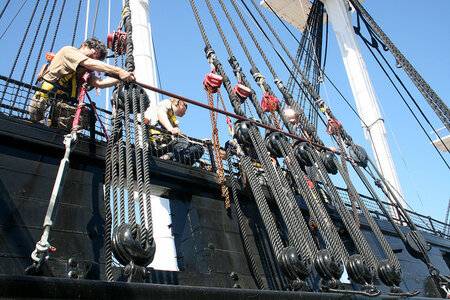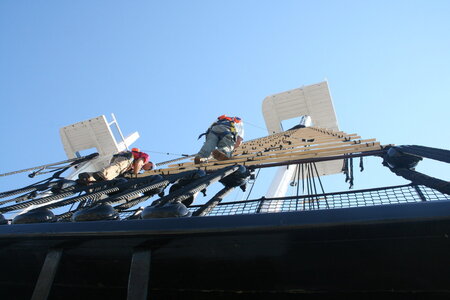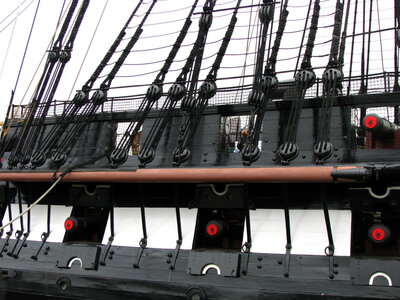Paul, "deadeyes evenly spaced" appears to be used on the Wasa in WasaMuseet. I'd go with that one. The museum made an educated guess, and if you choose what they did, you're in good company if it's proven wrong in the distant future. Your shrouds should have enough flexibility to stretch and allow adjustments of the lanyards to get the upper deadeyes where you want them. The shrouds should have no slack, and be just a little bit tighter than that. Every shroud pair places more force of the mast, and it adds up. You can judge by feel how tight they are. If a shroud or two is gooped up with too much glue at this point, replace it. You have the luxury of being able to make your own lines. Take advantage of it! It's more work, but if you expected to get this ship down without some painful setbacks to correct things, you're in the wrong hobby. Be glad this is the one of the very few that requires rework, because that in itself is a testament to your careful planning and skill. As much as you hate to admit it, this ship is your practice model, because it is your first. Be glad you have the opportunity to rework this, and that it's not something buried behind a bunch of other stuff. Access is no issue here... only time and patience.
